Norman White – But I would prefer that it sneaks in through some back door
2 CommentsThe Normill is an old watermill in Durham (Ontario, Canada), a village 80 miles Northwest of Toronto. The big stone building next to a stunningly beautiful pond, was bought years ago by artist Norman T White (San Antonio, Texas, 1938)
The mill smells like old flour, animal carcasses and bat shit and harbours the soul of Norman White. His personal history is visible in the old photos of the Dutch fisherman relatives of his mother. The building is littered with the material his work is made of: machine parts and a bunch of old computers. The raw architecture of the construction seems hardly altered in the years White lived in it. He sleeps over the gas stove in the kitchen in a small attic. The reason why he lodges here lies in the cold winters, when snow piles up and the temperature drops below zero. The building is spacious: it has a clean working spot; a big storage space, a cellar, actually a steel workshop; a room full of closets and drawers stacked with electronics; enough room for a large bat colony that lives in the cracks in the impressive walls.
You can walk around for hours, investigate the archives, the boxes with machine parts and printed circuit boards, wired art pieces in themselves. In the corner of the cellar leans a big raft made of plastic bottles against the wall.
Norman White, in his seventies, looks young: more a boy then a man. His friends say that his looks never changed, he is the same as thirty years ago. White is a myth in and outside of Canada. He is one of the godfathers of electronic-, machine- and robotic art and taught for more then twenty five years at the Ontario College of Art and Design in Toronto. His offspring is well known in the electronic art world, Doug Back, Peter Flemming, Jeff Man, Graham Smith and David Rokeby are his former students. And they all visit his annual parties at the Normill, to celebrate their friendship with fires, swimming, music and art. Regularly artists from all over the world join and camp at the mill. White and his friends organised robot fights, machine wrestling: ‘Rawbotics & Sumo robots’ long before it became fashionable.White won several international awards and his art is shown all over the world. On his website you can find descriptions of his works. It starts with the motto: “We fix toasters!’The explanation: ‘I don’t really fix toasters, although I’d be proud if I could. Almost nobody fixes toasters. This is because a modern toaster is nearly impossible to fix, held together with little bendy tabs that break off if you bend them more than twice. The toaster manufacturer naturally expects that you do the Right Thing — toss that dysfunctional item in the dump and buy a new one! All in all, the working toaster is a perfect symbol for modern utility in general… glamorous and efficient! Nevertheless, staring at this glamorous efficient high-resolution computer screen for hours at a time, you and I are both wrecking our eyes, not to mention our social lives. But, hey, I don’t mind… do you?’
In the Normill White designs and constructs appliances which, unlike toasters, are clearly pointless and useless, according to his own motto. A few years ago, White gave a lecture in Amsterdam (still visible online, see below). Supported with visual evidence White talked about the clumsiness of machines: we try to imitate life with raw materials; artists make flesh out of clay, fruit out of canvas. Why should I make an artificial creature? Not to improve nature.”
A work still in development – typical for White, who works for years on projects trying out different versions of an idea – is The Helpless Robot. The work is never finished; White says he presents phases of his research. The helpless robot looks a bit like a ship. An earlier machine Facing out Low (1977) that reacts on the audience looked a bit like the R2D2 robot in Starwars and White seemed to have to try out another robot idea. The helpless robot is made of steel, wood and has handles to move him. There is no motor in the construction, but it has sensors and a synthetic voice that asks you to touch and move it about. Based on the movements that it remembers, it tries to predict human behaviour. White sees this as an exercise in modelling an artificial personality. The robot says things like: ‘I appreciate your help but you are turning me to far, I said: go to the right! Go back I said, uh… you can turn me now to the left.’ The personality does not instruct the audience at random, that would be useless, but goes through different phases, from friendliness to grumpiness. If you leave the robot alone long enough, it mumbles that nobody visits a gallery anymore nowadays. It becomes depressed when it is left alone, not touched anymore and if you work enthusiastically with it he takes you for granted, and looses interest.
White explains: ‘I fall asleep of video. I need smell, taste, something tactile: typical elements for a 3 dimensional system that can break. That interests me: things that can break.’ For Whites work breaking is not typical, he is proud that one of his first art pieces he made for the Canadian Broadcast Company in Vancouver (1975), existing off hundred of lamps, still works after more then twenty years. The bulbs in a large (8 ft.x 40 ft.) logic/light mural simulate raindrops falling randomly on the surface of a quiet pond. Of course machine parts brake down, for instance during transport. When we were visiting, White was repairing the brain of the helpless robot for an exhibition in Europe.
White has a modest personality, speaks slowly and laughs a lot. ‘Of great influence was the Commedia dell’ arte show I saw years ago in San Francisco. If a plane flew by or a baby carriage came along, it was used in the performance: it became part of the show. That is fantastic because you never know what will happen. You see this sort of sensibility also with some Dutch artists like Willem de Ridder and Theo Janssen, the sensibility to integrate. I use electronics not to maintain control but to loose control. An example: a former student of mine worked without deep knowledge with motors and found a chaotic system turning two different ways, but he didn’t realize he forgot some essential switches. By trying he created something he could impossibly have designed otherwise and that surprised engineers.’
White taught himself electronics in the 60-ies: ‘In the 25 years that I taught I made clear to my students that didn’t want artists to hire engineers to do the electronic work for them but to get involved themselves. It sounds maybe threatening or too complicated. My Dutch mother had an expression: ‘Eat through a mountain of rice that was electronics for me, it became candy: I got interested, involved and started to study magazines and built all sorts of stuff. Over the years I found that electronics is more about patterns than about mathematics.”
White traveled a lot in his life. He got is BA in biology at Harvard University in 1959, left for New York and San Francisco where he enrolled in art classes. Too young for the beatnik-generation and later too old to be a hippie, White grew up in a period when art and technology went through a golden era: exhibitions about Cybernetic Serendipity (ICA, London 1968), The Machine (MOMA, New York 1968), Software (Jewish Museum NYC, 1970), worldwide kinetic art pieces and to top it off the first moon landing on 20 July 1969. Influential was the Canadian professor Marshall McLuhan who wrote Understanding Media (1964), a bestseller, translated in more then 20 languages. White refers to Mc Luhan a few times during our talks. Like more artists of his generation White traveled through North Africa. He became fascinated by Islamic patterns; the same pattern he used in his printed circuit boards.
The time we are at the mill, we enjoy White’ s stories about the taming of a skunk; a project in the village with girls from secondary school building a ‘dancing fountain’; how he found the mill and how he shared it with other artists; about Them F*cking Robots a project with artist Laura Kikakau with whom he agreed to make a breathing and moving sex machine. They both made a male and a female robot, without consultation each other, only about the format of the genitals. The robots performed publicly making a lot of noise, but first White had to file its penis because it was too big. And then I haven’t even mentioned the stories about the first online communication projects before the Internet as we know it even existed, in which White with other artists experimented with interactive storytelling, ascii-drawings; or the telecommunication project together with artist Doug Back, Telephonic Arm Wrestling (1986), where contestants in two different cities were allowed to arm-wrestle, using motorized force-transmitting systems interconnected by a telephone data link.
You can find all this and more on his website, and comments like: ‘Art as pure self-expression doesn’t interest me very much. Self-expression inevitably creeps into art, but I would prefer that it sneaks in through some back door. For me, Art comes alive only when it provides a framework for asking questions. Science provides that framework too, but ‘good science’ is too constrained for me. I would rather ask questions that simultaneously address a multitude of worlds… from living organisms to culture to confusion and rust. Only art can give me that generality.’ After being a while in the Normill I found out this is no humbug. To use one of Whites favorite quotes: ‘If I’m going to work for an idiot, it might as well be me.’
Norman White website: www.normill.ca
Directors Biography
Cinematography : Sam Nemeth
Sound : Floor van Spaendonck
Editing : Sam Nemeth
Narration : Elizabeth Turner
Music : Jan Kees van Kampen
Participants / Performers : Norman White, Laura Kikauka, Jeff Man, Graham Smith, Michelle Kasparzak, Sandor Ajzenstad, Edward Shanken
Norman White is one of the most influential media artists in his field. He produced humorous and beautiful work, but also trained hundreds of artists at the Ontario College of Art and Design to make their own, hands-on media art from 1976 onwards. This is on of the reasons a vast number of acclaimed media artists come from Canada. However, media-art does not cover the realm of White’s work: he produced a large oeuvre, from paintings to light murals to interactive robotics. Ine Poppe and Sam Nemeth filmed White and his students: they visited him in his huge watermill in Ontario and followed him and his students at work.
Comments
2 Responses to “Norman White – But I would prefer that it sneaks in through some back door”
Leave a Reply
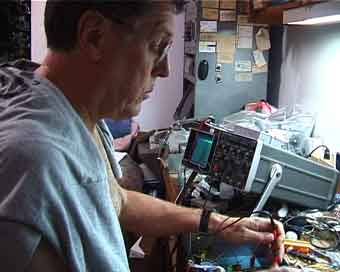
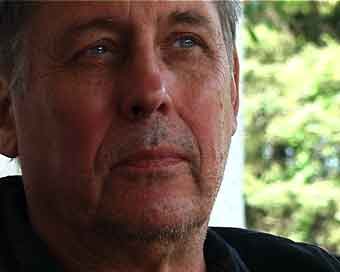
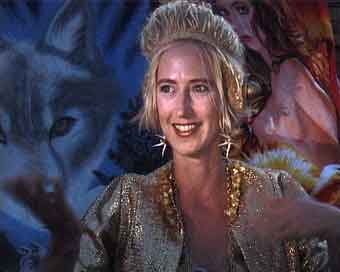


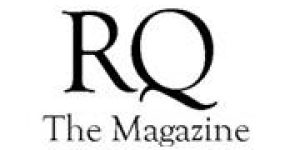
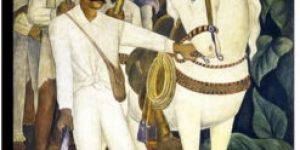
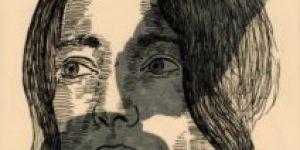
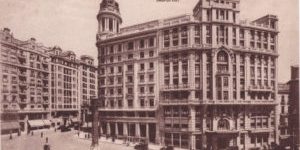

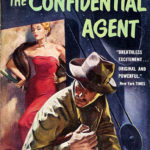
February 16th, 2013 @ 6:50 pm
[…] Read more: http://rozenbergquarterly.com/?p=4430 […]
January 19th, 2014 @ 2:00 am
Hi Norman the Magnificent. I am Norman Eugene White born in San Antonio, Texas at the Nics Hospital on Oct 19, 1935. I have a PhD in Biological Defense obtained in 2007. Looks like the Name Norman White is good for both of us.